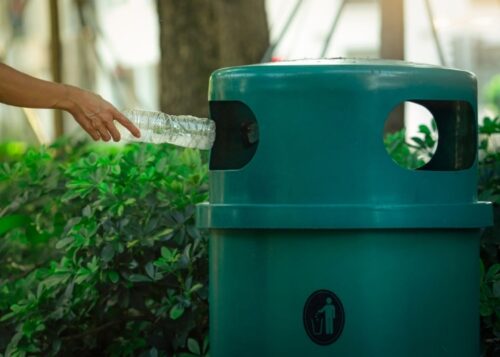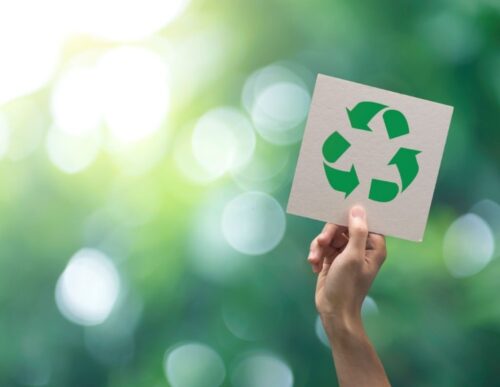Top 15 Ways To Reduce Rubbish (And Your carbon footprint)
Easy and Constructive Ways To Protect Our Environment
Climate change involves the increase in greenhouse gas emissions, also known as carbon dioxide emissions. All organisations, governments, and businesses can assist in reducing greenhouse emissions. Therefore, ensuring the reduction of carbon footprint and protecting the environment. Climate change is the biggest challenge the worldwide community faces today. The two words that pop up are carbon footprint. Too much or too little carbon dioxide can be harmful. Rubbish removal professionals of prorubbishremovalbrisbane.com.au have shared the 15 ways to reduce waste and your carbon footprint. Let’s check them out.
1. Pay Attention to Packaging
When shopping, visit stores that don’t do much packaging. You may buy loose tomatoes instead of tomatoes wrapped in plastic. Reusable bags are good to consider. However, plastic would be much better than paper if you don’t have one.
2. Consume Less Meat
According to study, each meat-eater is responsible for 1.5 more tonnes of greenhouse gases each year than a vegan over the course of their lifetime. By 2050, annual worldwide meat output is expected to be more than twice what it was at the turn of the century, resulting in even higher glasshouse gas emissions. Eating less meat is one of the quickest methods to reduce our collective glasshouse gas emissions.
3. Reduction of Food Waste
Many are unaware of how much food they waste every day. We squander away more than 96 percent of the food we consume, which ends up in landfills. Food decomposes in landfills to produce methane, a powerful greenhouse gas that contributes to climate change. Here are some ways to reduce your food waste.
- Before you go shopping, plan your menu and only buy the items on it.
- Purchase only what you truly require and intend to use. Purchasing in bulk only saves money if the food is consumed before it spoils.
- Take only what you can eat in buffets.
4. Ditching Bottled Water
Plastic water bottles are particularly detrimental to the environment for a variety of reasons. They are created from petroleum materials like polythene terephthalate, which necessitates a significant quantity of fossil fuels to manufacture and transport. Plastic bottle recycling is also a complex procedure, and in many cases, waste from plastic bottles ends up in landfills, where it eventually ends up in parks, rivers, and seas. Furthermore, the production of plastic necessitates a huge amount of water, with each bottle requiring an average of 2 gallons.

5. Driving Less
When you’re going on a weekend road trip or a major grocery run, biking just won’t cut it. When you have to drive, there are a few strategies that can help you lessen your carbon footprint. Keep your foot light on the gas pedal. Speeding wastes gas and money contributes to your carbon footprint. Take your foot entirely off the gas pedal. Cruise control also helps to cut CO2 emissions when driving while also making the journey more enjoyable.
6. Unplug
Any appliances that you don’t use often you can unplug. Many electronics draw off energy even when not in use. Electronics such as Televisions, laptops, chargers should be unplugged when they are not being used.
7. Limit your use of paper: magazines, receipts
Read your favorite magazine on your computer or tablet through a digital subscription. In this digital era, most firms offer bills through email. Some stores even provide e-receipts also. A digital subscription is way more cost-effective than a hard copy.
8. Donate used items and buy second hand
Consider buying used items instead of new ones, which will help you save more. Through buying secondhand items, you’ll save the item from being dumped Avoid hoarding things you no longer use and donate them to your local charities.
9. Using Cold Water
Use cold water to wash things that don’t necessarily need warm water. A lot of energy is used when heating water which can cause a large footprint. In fact, doing laundry with cold water for a year could save enough energy to drive a vehicle up to 400 miles.
10. Reuse, Reduce and Recycle
Do less purchasing and try reusing things that you can instead of buying new ones. You can do both at home and at work.

11. Window Shopping
If you are planning to spend, do window shopping first. This will help you purchase the thing you need and not impulse buying. You can reduce your footprint by not going to the store. In most cases, physical stores with home delivery have the lowest carbon footprint.
12. Energy Proof
Keep your cowling and heating systems properly maintained. You can also switch from using incandescent bulbs to fluorescent light bulbs. Compact fluorescent bulbs are more energy-efficient than traditional bulbs. Fluorescent bulbs are more expensive than ordinary bulbs, but they are the best way to save money on electricity.
13. Taking a Direct flight
Direct flights are better for the environment than those flights with stopovers. Because it only requires a few more miles of travel, it appears that the latter would consume slightly more fuel and emit more carbon. Direct flights, on the other hand, turn out to be significantly better for the environment. It isn’t only because you have fewer miles to travel. It’s because of takeoff and landing account for up to half of all carbon emissions.
14. Choosing Natural Alternatives
Purchasing items made of organic ingredients will help in the reduction of plastic and general trash output. Before buying any metal or plastic version of an item, consider if there’s is a natural alternative.
15. Get Organised
Reduce waste by organising your stuff. Sometimes we may fort something we placed in the fridge. Sometimes we buy things we don’t need or things we already have.
Conclusion
Climate change is frequently viewed as a problem that can only be solved by the government. The truth is that everyone can make a difference in terms of decreasing waste and carbon emissions. Use the strategies listed above to reduce waste and carbon emissions.



